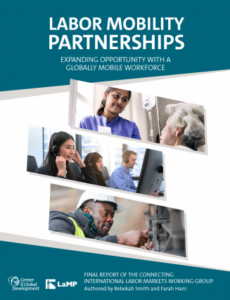
Originally published here with the Center for Global Development
By 2050, the prime working-age populations of OECD countries will have shrunk by more than 92 million people, while their populations over 65 years old will have grown by more than 100 million people. This means to maintain their current (and already historically low) ratio of prime working-age to 65+ people in the year 2050, OECD countries are currently facing a gap of more than 15 million workers per year, or a total of 400 million workers over 30 years. Meanwhile, estimates project that there will be close to 1.4 billion new working-age people in developing countries by 2050, of whom around 40 percent are unlikely to find meaningful employment in their home countries. Labor mobility offers a solution, connecting these potential migrants (who need jobs) to potential employers (who need workers). However, existing labor mobility systems are not developed to be able to handle labor flows of the size that are needed, and are constrained by negative public opinions of mobility. This report sets out the vision for Labor Mobility Partnerships (LaMP), which aims to be the first organization that actively works to increase rights-respecting labor mobility, ensuring that workers can access employment opportunities abroad.
